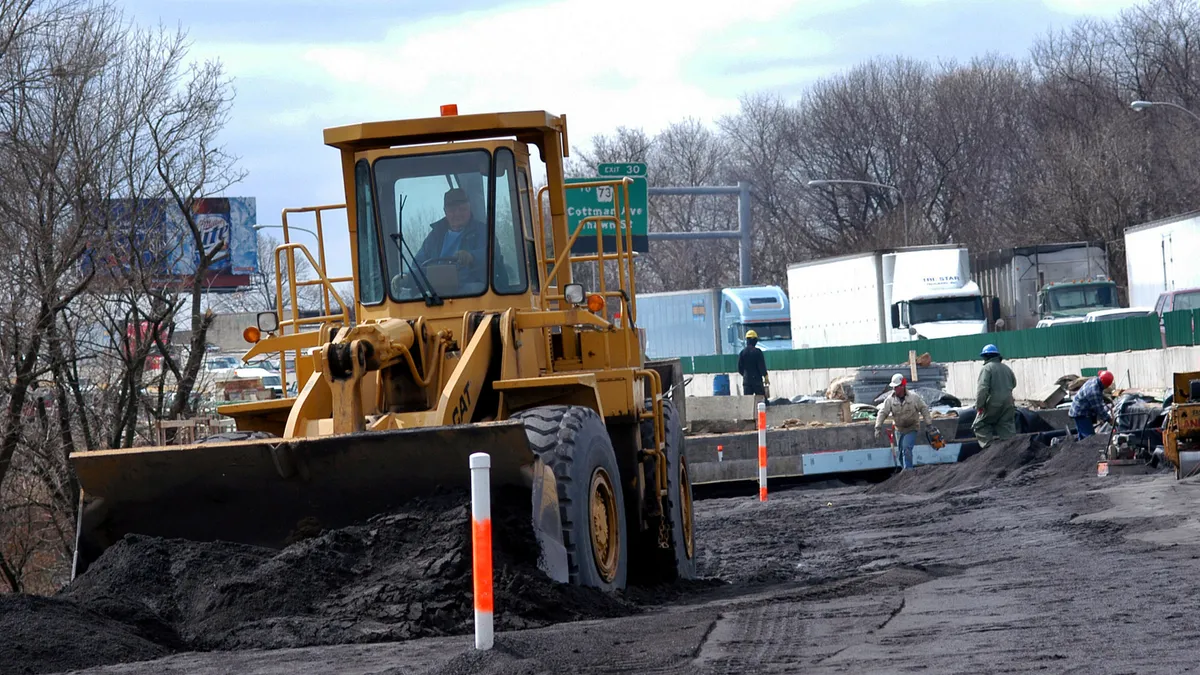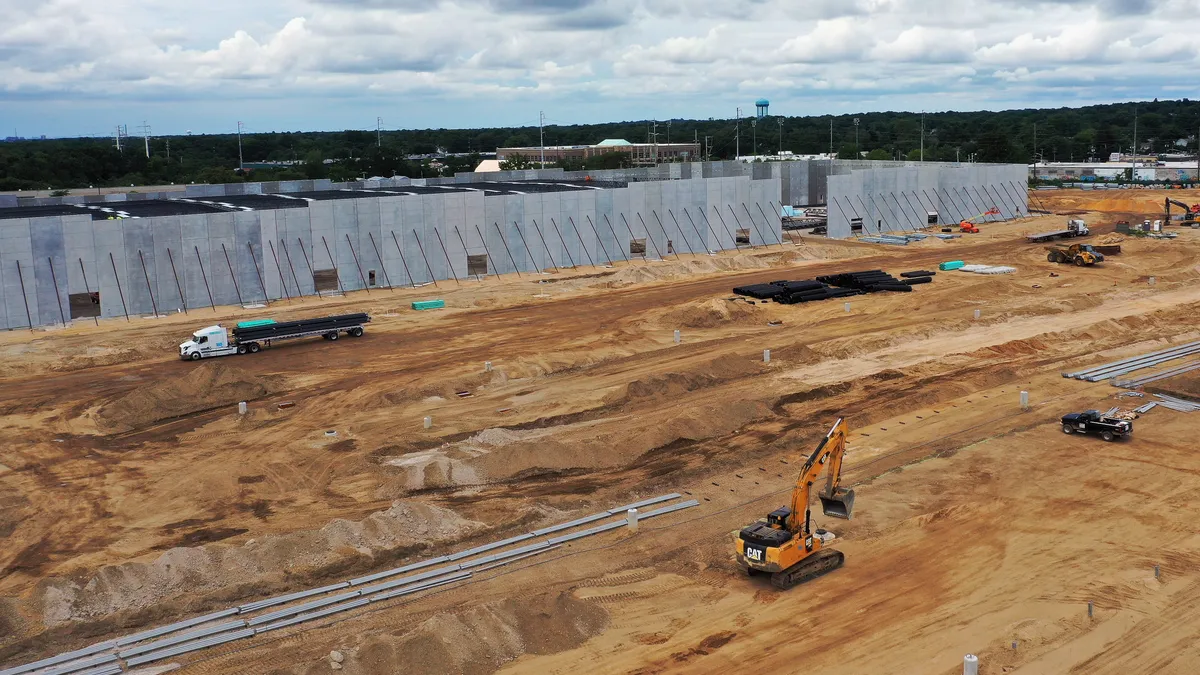Call it construction's version of a crystal ball.
Backlog, or the projects that construction companies have won, but haven't started working on, provides a rare glimpse of what lies ahead in an industry that typically measures itself on the solid foundations of what has already been built, and the real, measurable dollars that have already poured into its coffers.
During the pandemic, the industry's collective backlog numbers charted a line as jagged as the impacts of the crisis itself. But it was in those peaks and valleys that the true value of measuring the industry by what it hadn't built yet became apparent.
"As it turns out, backlog has neatly predicted what's happened with nonresidential construction overall," said Anirban Basu, chief economist for the Associated Builders and Contractors. "It's been a leading economic indicator."
Indeed, as the industry nears two years of being within COVID-19's grip, what's happened with backlog over that time — and even leading up to its onset — provides insight into where the industry may now be headed.
There was the sudden contraction in the spring of 2020 as COVID-19 became frighteningly real, for example, followed by a quick uptick that no one saw coming.
As the pandemic wore on, backlog continued to telegraph certain events quite accurately, including its rise and seeming recovery as 2020 faded into 2021, and news of vaccines brought hope to Americans in general, and the business sector specifically.
But then it also reflected the emergence of the delta variant, and presaged the return to a bunker mentality by many, as we collectively realized that this thing wasn't quite over yet.
Here, Construction Dive looks at the specifics of what contractors had on their books going back to 2018 in order to capture the past, present and future of the industry's backlog, in an attempt to gain insight into what current numbers can tell us as we head into 2022.
What came before
Any examination of backlog and COVID-19's impact on construction necessarily starts well before SARS-CoV-2 arrived on America's shores. With hindsight obscured by the pandemic's cloud, it's easy to forget where we were as an industry entering into 2020.
At that point, the post-Great Recession recovery was already the longest economic expansion on record, and businesses and market analysts were bracing for the next downturn. The wind that had been at construction companies' backs since 2012 was beginning to wane, a fact that could be seen in declining backlogs that began as early as 2018.
"Backlog was declining before the pandemic began," Basu said. "By 2018, there was growing concern among developers that some of these segments had become saturated — that we had built too much office space, that we had built too many hotels — and therefore it was more difficult to line up financing."
In the beginning
That was the environment when COVID-19 began.
"Then, of course, the pandemic strikes," Basu said. "The recession begins in February of 2020, the economy falls apart in March and April, and predictably at that time, projects are disappearing from backlog."
Jobs that had been on the drawing board and were scheduled to move forward evaporated by April 2020, Basu said, causing contractors, who were fearing the worst at the time, to dissemble the capacity they had worked so hard to build up during the expansion.
That meant returning leased equipment before it was due, even in the face of penalties, while simultaneously laying off workers who had been so treasured up to that point.
"Assembling these teams of construction workers was a truly significant accomplishment," Basu said. "All of the sudden, that was dissembled very quickly, as contractors thought, 'This is 2008 all over again. I need to cut costs. I need to salvage cash flow. I need to shrink my balance sheet and do what I need to survive.'"
Construction's deconstruction
But while construction took years to dig itself out of the previous contraction, the initial COVID-19 recession in construction lasted less than three months, buoyed by massive government stimulus.
"By May of 2020, America is adding back millions of jobs, with an additional 4.8 million jobs coming in June of 2020 alone," Basu said. "The federal government would eventually shove around $6 trillion in stimulus into the economy over the course of roughly a year."
In construction, that stimulus, while stoking even more private investment, ran headlong into the lack of capacity that contractors had taken out at the dawn of the pandemic, leading to a corresponding rise in backlog, but also, the advent of higher material prices during the summer of 2020.
That, in turn, led contractors to pass on higher bid prices to owners, who suddenly experienced sticker shock and pulled back on bringing projects to market once again, leading to backlog's 2020 nadir in November, when it bottomed at 7.2 months, or 27% below its peak of 9.9 months in the second quarter of 2018.
Then, as 2021 dawned, the emergence of vaccines offered hope, and backlog began building again. With a temporary dip caused by an unravelling supply chain, construction's collective backlog numbers eventually surpassed January 2020 levels by June of 2021.
Delta's curve
And that very well may have been the end of the story, were COVID-19 not such a wily affliction.
"We thought a crescendo of demand would be met with stepped up supply as global supply chains became more orderly," Basu said. "Instead, what happened is we got delta."
As the impacts of the highly contagious delta variant spread throughout summer of 2021, a nascent recovery of the supply chain was put in check, causing widespread shutdowns in Southeast Asia and driving material prices even higher around the globe.
"The global supply chain was never able to fully recover," Basu said.
That's when backlog dove again, until October, when the worst of delta appeared behind us. Projects began emerging to build up backlog once more, as anticipation built for the passage of a federal infrastructure bill, which finally became reality in November.
Now that it's in place, it's the "wild card" for construction backlog, Basu said. While companies that focus on public projects surely will benefit, the outlook for private markets isn't as clear.
There's also the issue of timing for when those dollars will translate into backlog.
"That will not show up in backlog in any meaningful way until maybe March or April of next year, with a bigger increase during summer 2022," Basu said. That means construction won't begin in earnest on those projects until late next year, he added.
Another face of COVID, again
Against that backdrop, as news of the omicron variant again hits businesses, whether current momentum can be sustained is anyone's guess.
But looking at a corresponding dip in both small business confidence, as measured by the National Federation of Independent Business and contractor optimism as measured by ABC's Construction Confidence Index, Basu isn't betting on it.
"Confidence could dip even further, particularly if there is a significant uptick in the infection rate," Basu said. "Put this all together, and it's not a great foundation upon which to develop real estate. The next couple months could be soft for backlog."
Correction: A previous version of this article misstated the low point for backlog in November of 2020.


















